[javascript protected email address]
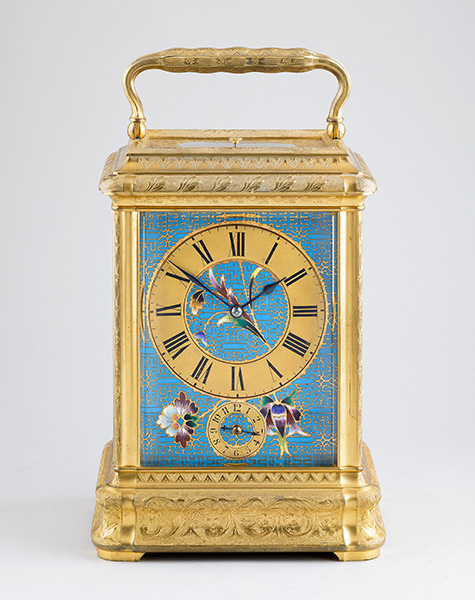
Breguet Paris No. 5125, Drocourt Paris No.16032

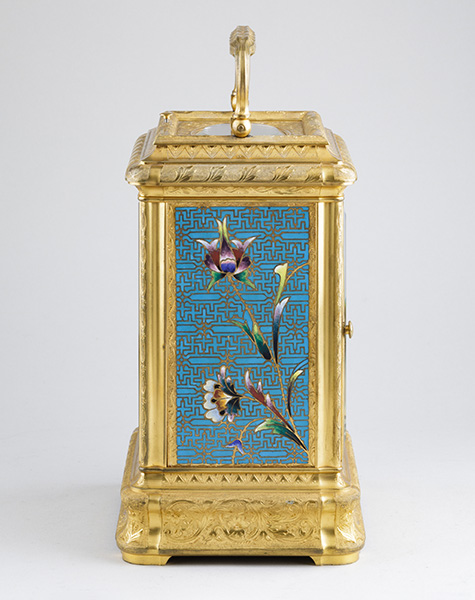
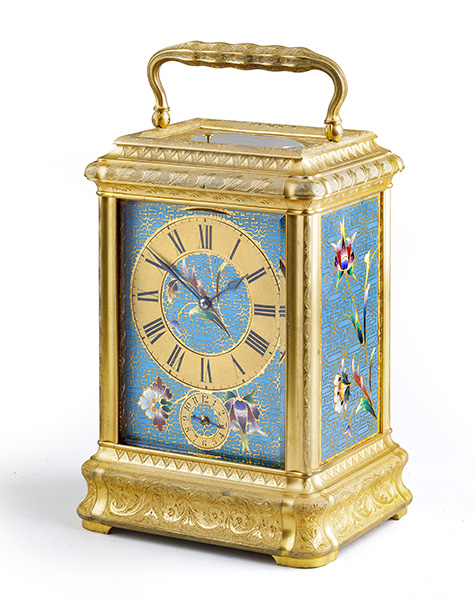
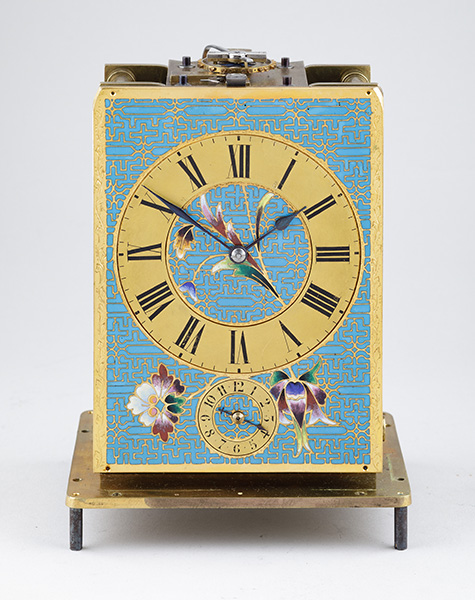
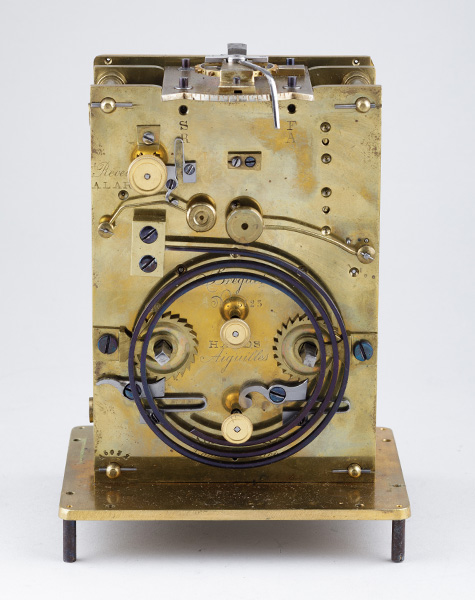
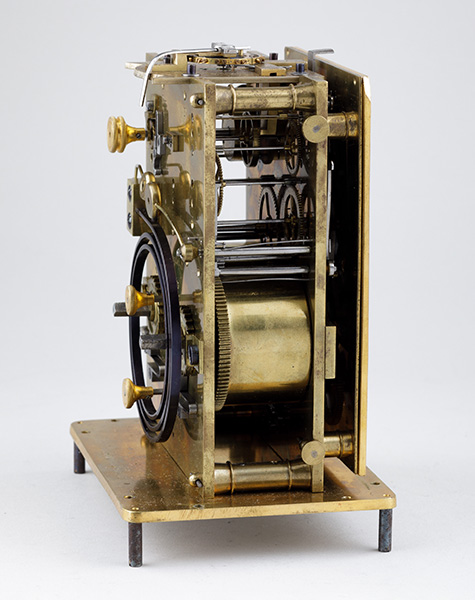
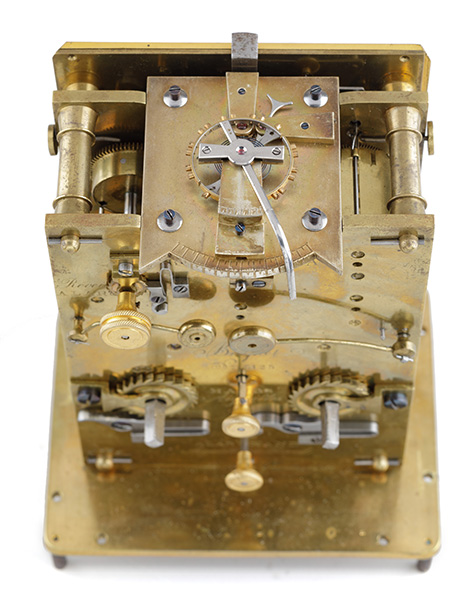
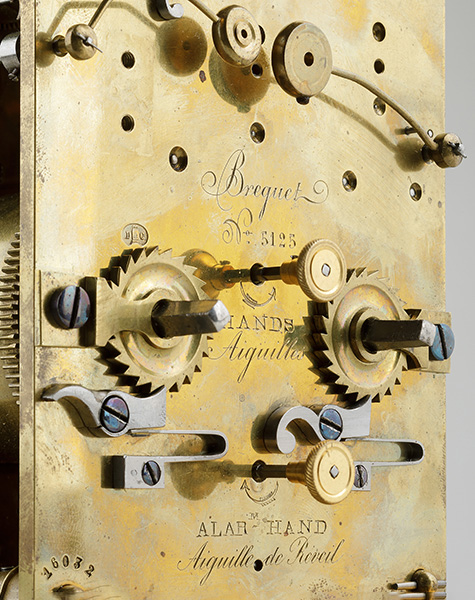
Circa 1893
Sold
8 ½ inches high
A very fine gilt-brass and cloisonne enamel giant striking and repeating carriage clock Sold on 7th July 1893 Case Of the finest quality of Gorge pattern engraved overall with stylised foliate decoration on a pounced ground, the side panels decorated a la Japonaiserie with polychrome flowers on stalks within a geometric blue enamel background; stamped 16032 over the entire case. Dial Decorated identically to the side panels, with a gilt chapter ring with Roman numerals and blued spade hands, alarm ring below. Movement With twin spring barrels, 4 cylindrical back-pinned pillars, strike/alarm/trip hour repeat on the blued steel gong, going train with large gilt-brass platform lever escapement with large diameter cut bimetallic balance; backplate signed Breguet No. 5125 and stamped DC for Drocourt and numbered 1632. Provenance Sold by Breguet on 7th July 1893 to Mm. & Mir Cottenau for 800 francs Christie's, London, Important Clocks, July 2002, Lot 53 sold for £17,925 Cloisonne enamelling is often confused with its counterpart champleve enamelling. Champleve enamel is an easier process to make and most enamelled French carriage clocks are decorated in the champleve style. Cloisonne enamel is made by creating intricate designs using tiny wire fixed to a metal ground – in this instance the dial and side plates – the intricate design forms tiny pockets or cells which are then individually filled with enamels, often of different colours, requiring individual firings. It is a delicate and highly skilled process which the Chinese and Japanese excelled at.
